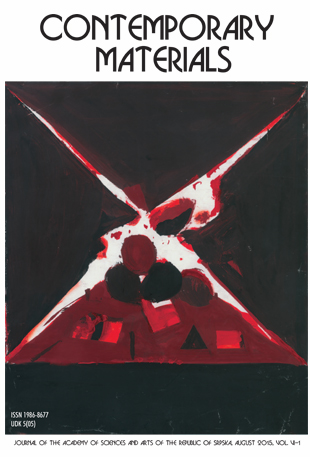ATOMIC FORCE MICROSCOPY AS A TOOL FOR TESTING BIOMEDICAL SAMPLES AND ELIMINATION PROBE ARTIFACTS
DOI:
https://doi.org/10.7251/COMEN1902137PAbstract
One of the most perspective available techniques for investigation of the composition, structure and properties of materials, is scanning probe microscopy (SPM), respectively its components scanning tunneling microscopy (STM) and atomic force microscopy (AFM). This technique is used in multidisciplinary research in the field of medicine, pharmacy, dentistry, material science, etc., for study of biological samples, chemical compounds, pharmaceutical products, artificial tissues, implantology materials, and all other materials that have nanotechnological impact on application in these scientific fields. This is because the probes have not perfect size and geometry, which leads to the appearance of artifacts. They are defined as characteristics that appear on the image and are not present on the sample. These effects caused by convolutions between the probe and sample can be corrected to a certain extent by mathematical manipulation of topographic data. The methodology used in this paper is based on algebra of sets, and basic tools of mathematical morphology. Mathematical algorithms for the „blind reconstruction“ of the tip were used, and then in order to detect the parts of the sample surface which is not available in real-time scanning deconvolution was applied. The limit of the real probe tip is calculated from the image, using the morphological limitations inherent in the recording process. The result acuired as an image of the reconstructed surface out of the used images, with the reconstruction of the real tip. The presented results are clear proof of the usability of atomic force microscopy as a technique for imaging of biological materials on nano-level, and the applied algorithms increase the usability of the images in terms of a better conclusion based on precise numerical data taken from the processed images.
Keywords: Characterization, materials, SPM, AFM, probes, artefacts, convolution, post-processing, emulation.
